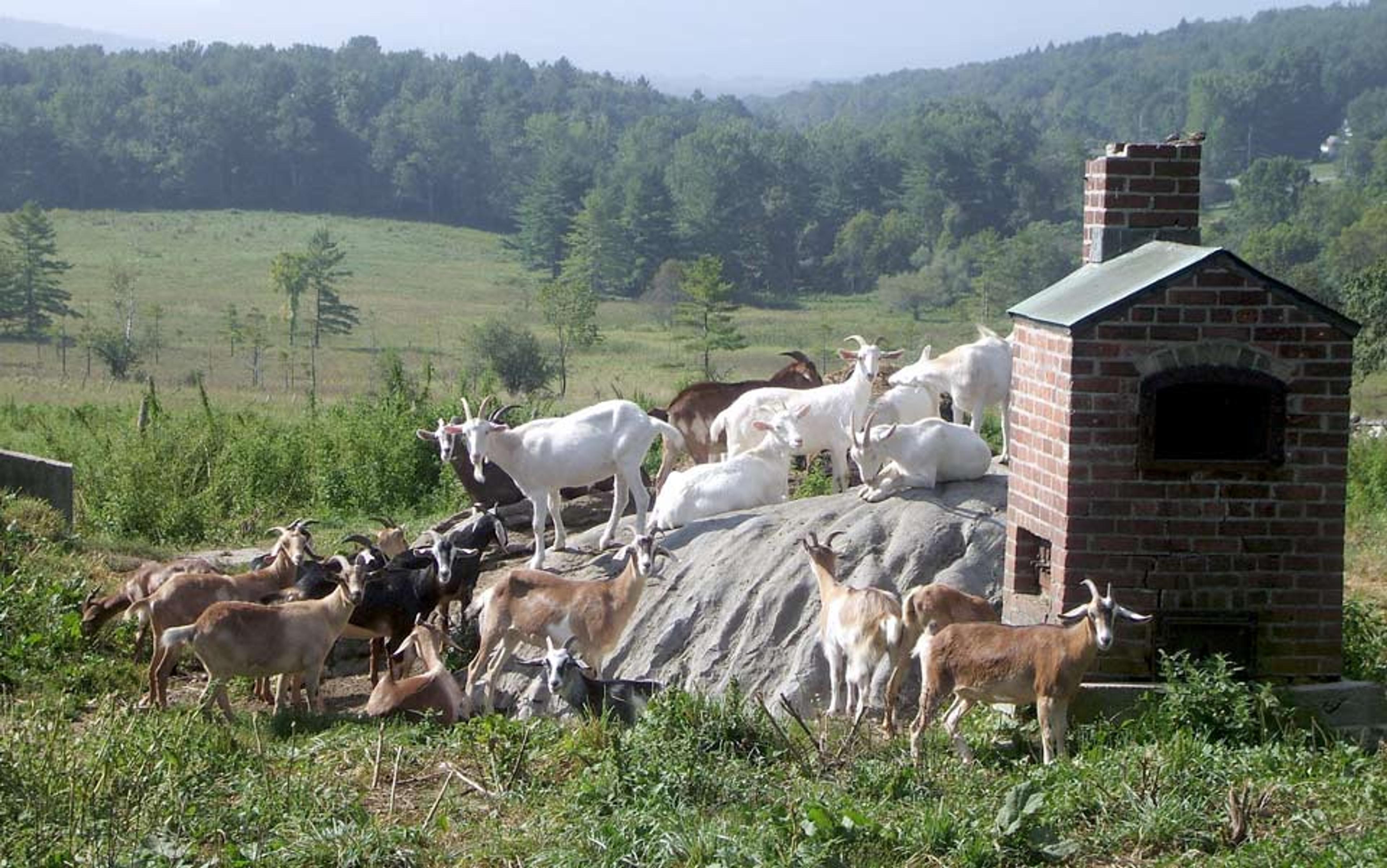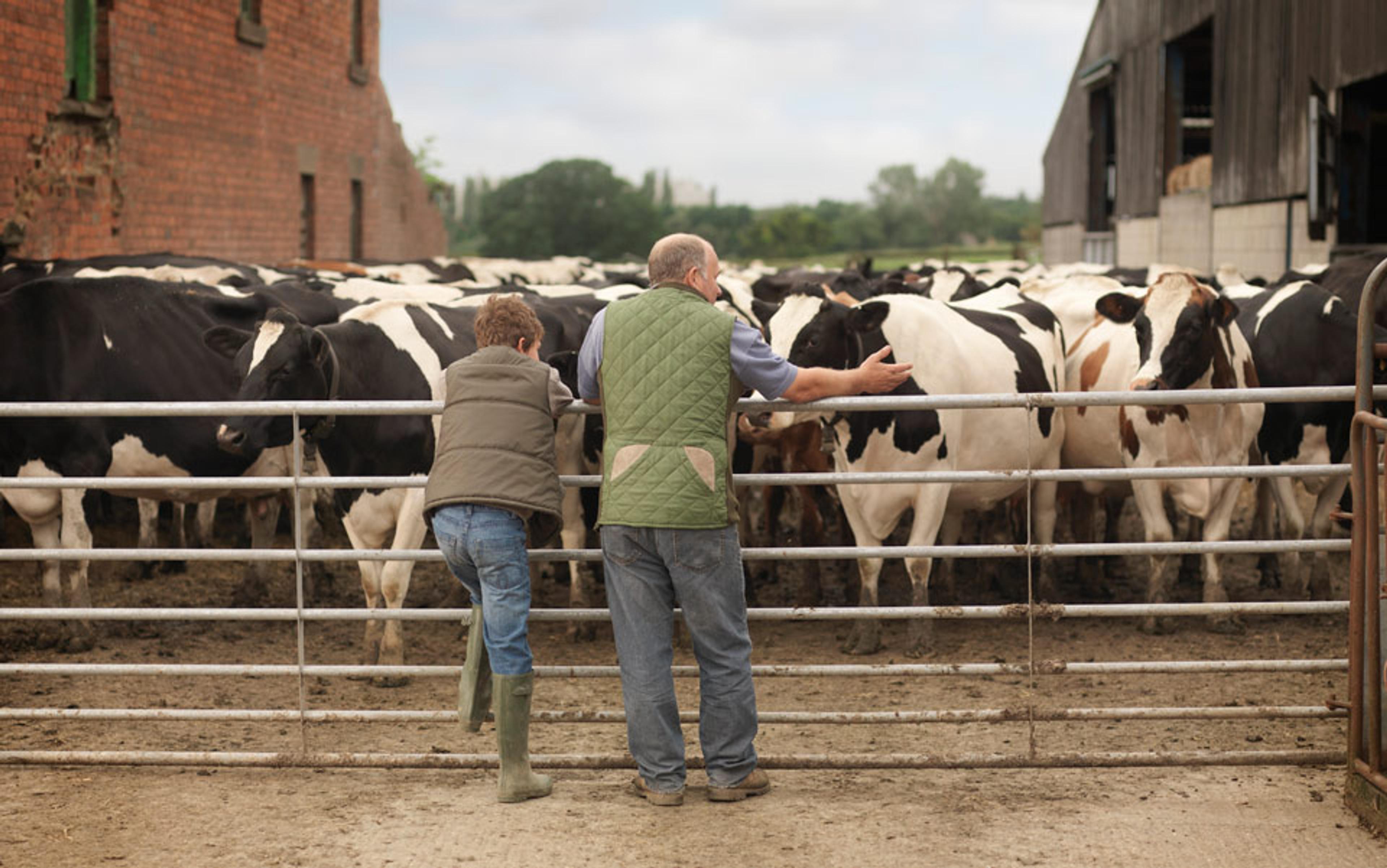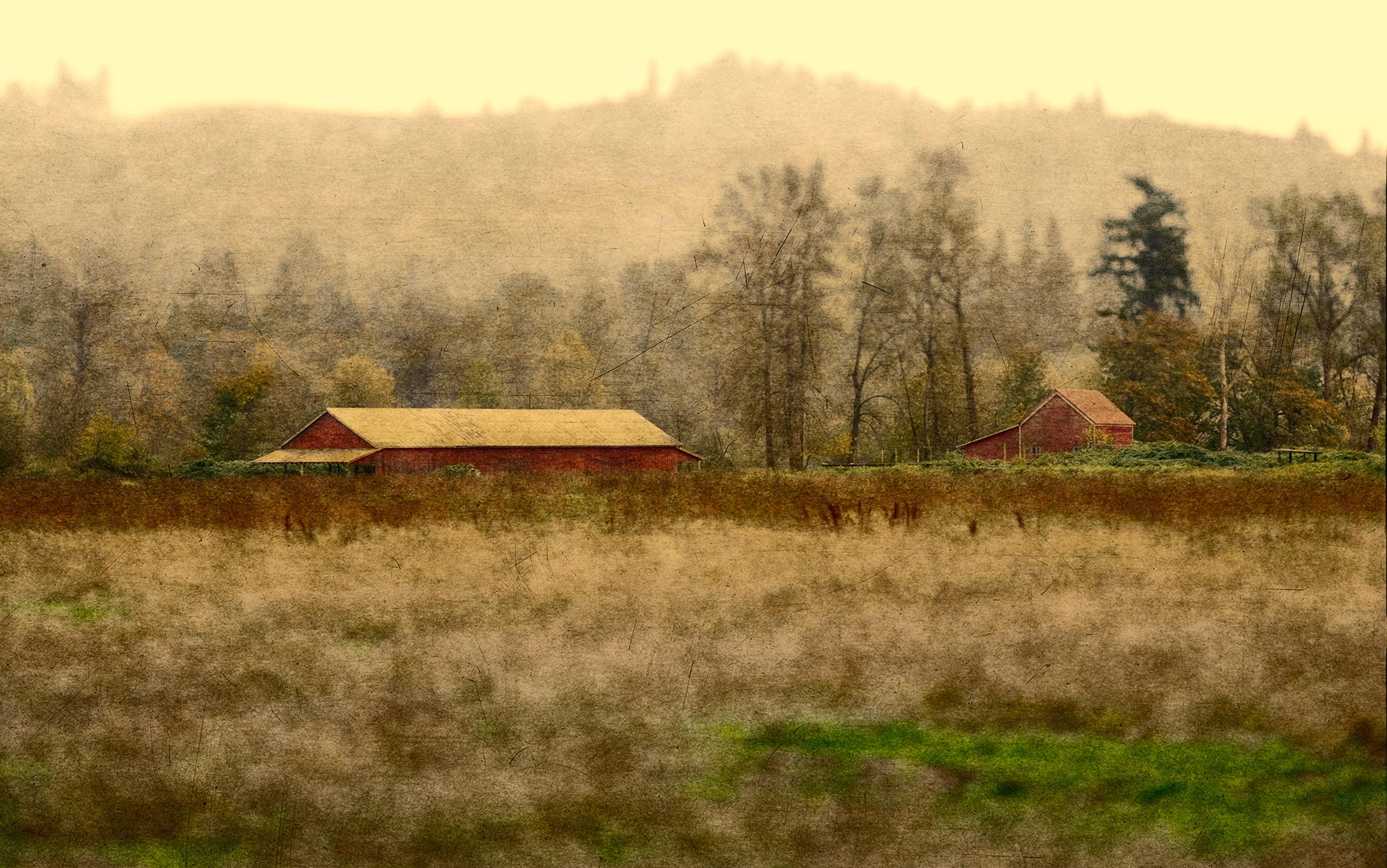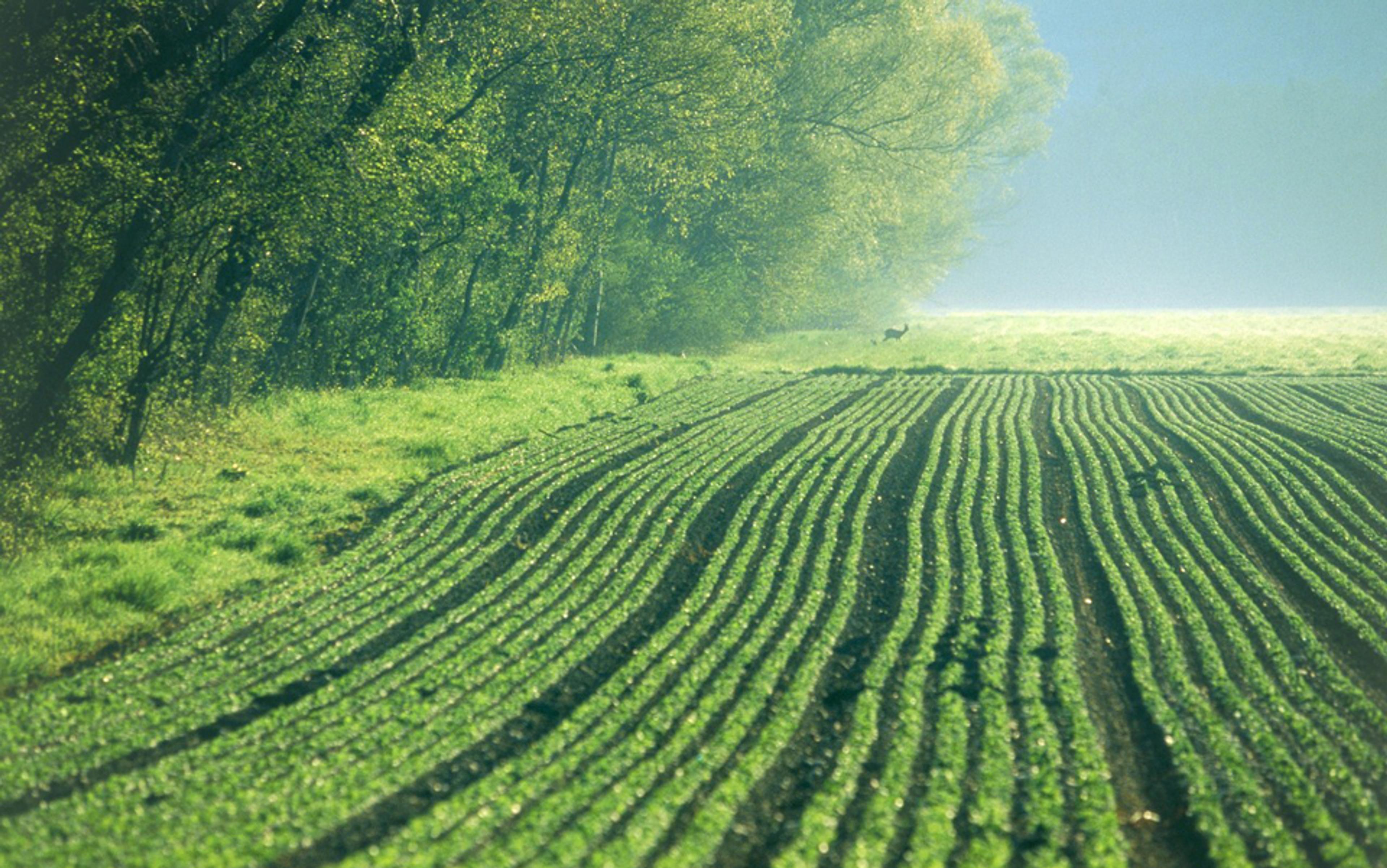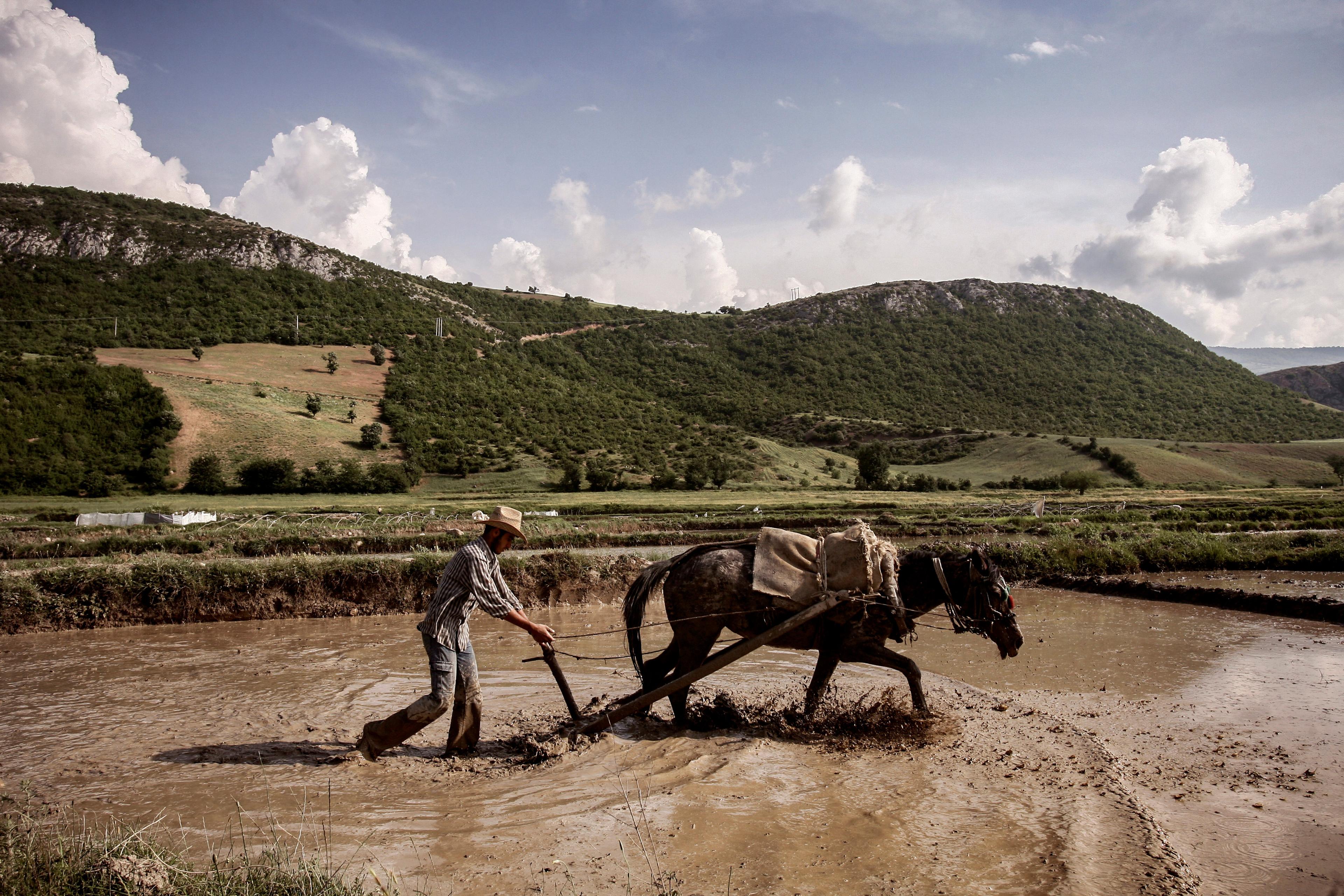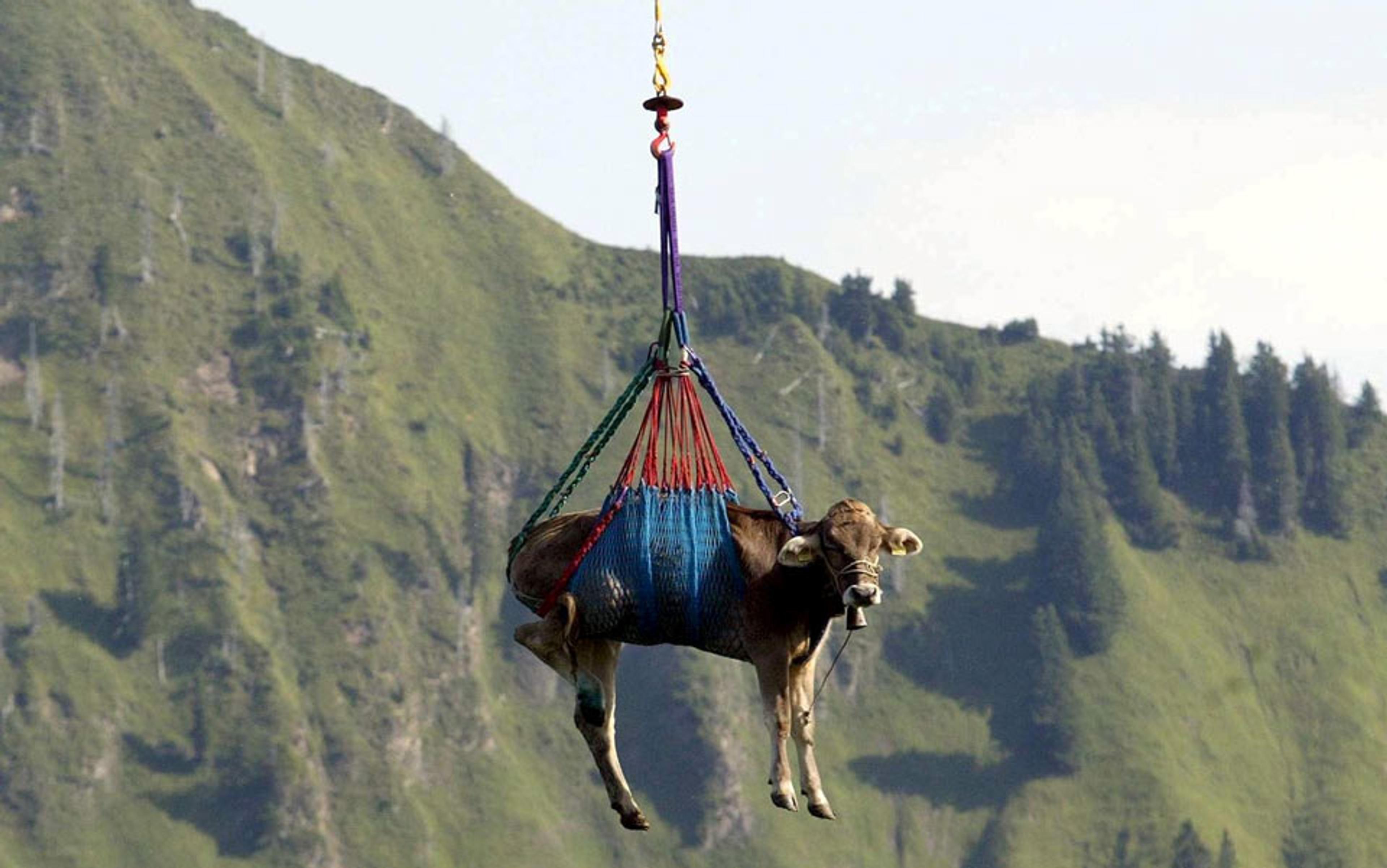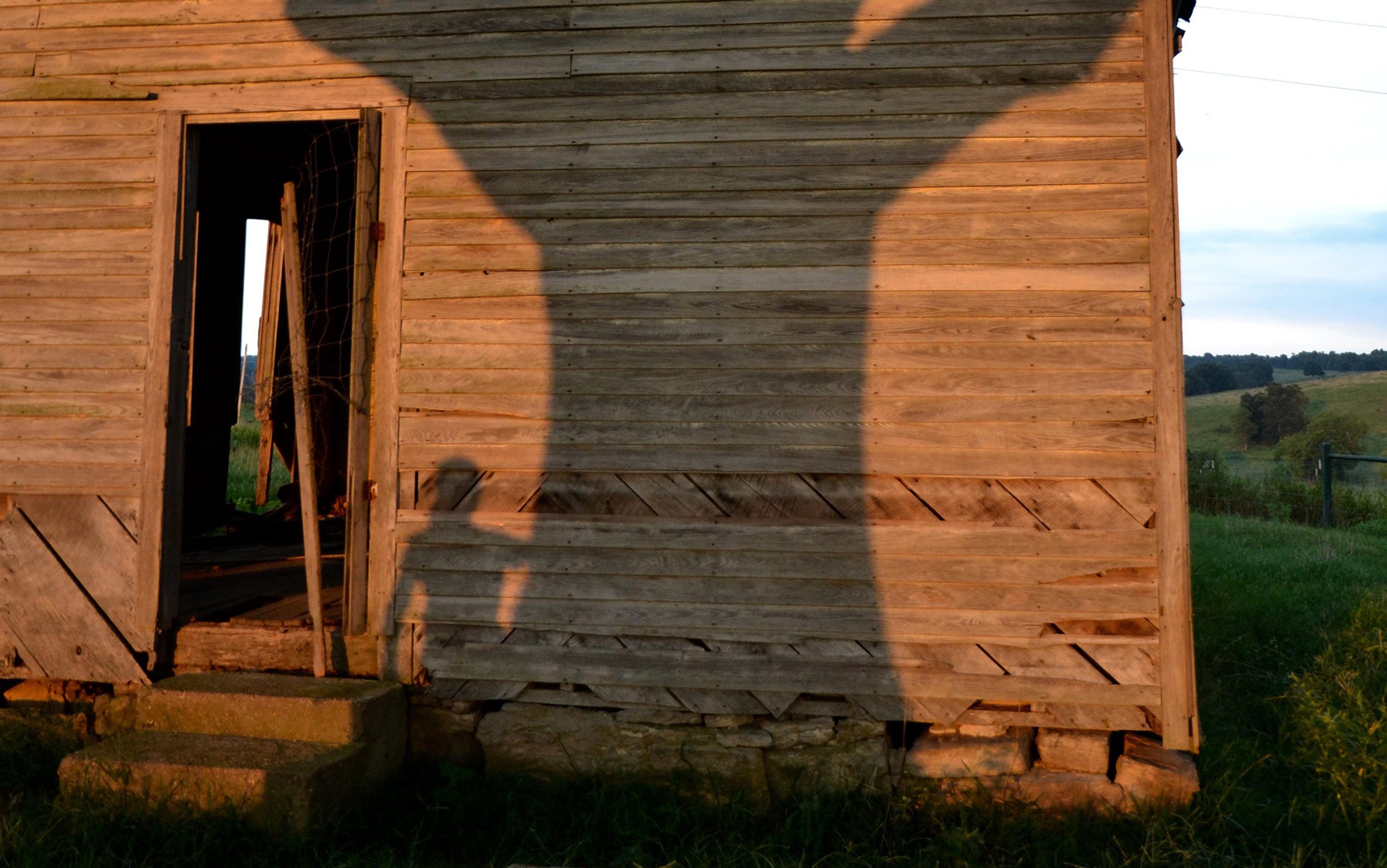‘I had to take a sick baby goat to bed with me last night,’ my sister said. ‘I found her lying in a corner of the greenhouse barn getting ready to die.’ ’Did she make it?’ I asked. ‘Yep,’ said Jennifer. ‘I tubed her and gave her some electrolytes when I brought her in, fed her and wrapped her up in a towel, and took her up to bed. She peed all over me around 5am, so I brought her downstairs and put her in the barrel with the two boys. It’s a bit crowded, but they’re all going out to the barn today anyway.’
Jennifer and her husband Melvin work Polymeadows Farm, a small goat dairy farm and dairy plant in Vermont. They are currently milking about 120 goats. During kidding season, twice a year, the newborns spend their first night in a barrel of hay in the kitchen. This is important during Vermont winters, but also in summer, so that Jennifer knows the kids are healthy before they go out and join the rest.
My sister and I live very different lives. She’s a dairy goat farmer and I do genetics research at Penn State University in the middle of Pennsylvania. I spend much of my day at a computer in my small office, or sometimes in the genetics lab that I manage, and she spends her days outdoors, haying, watering and graining her goats, bottle-feeding the babies, milking the dams, or in the dairy plant making cheese or yogurt and bottling milk.
I go up to the farm as often as I can, sometimes three or four times a year. The days there are endless in the way that the long summer days of childhood are, capped by the kind of exhaustion that overtakes you when you haven’t remembered to pace yourself. Which you don’t as a child, because why would you? And at the farm you can’t because there is always more to do.
When I’m there, the day ends for me only when I’m too tired to do any more, but often for Jennifer (and always for her husband Melvin) the day doesn’t end until well after midnight, when the last of the goats has been milked, the milking machine sterilised and the milking parlour hosed down, the barn checked for newborns, the yogurt put to bed.
My sister calls me early every Saturday morning while she’s doing chores: bottle-feeding the youngest kids, haying and graining the rest, or getting ready to go to the farmers’ market. She tells me who’s about to give birth or who just did, what she’s got to sell at the market, what the weather’s like and whether Melvin thinks he’ll be able to hay that day.
Fifty years on from Snow, the idea that it’s possible to be well-educated in both science and the humanities is pretty much a pipe-dream
One Saturday in early spring, she told me they had plans to go to a play that evening. I was surprised because weeks can go by with Melvin never leaving the farm, and even then it’s usually work-related. Jennifer sometimes jokes that he’s allowed time off only once every two weeks — and then only briefly. I emailed the next day to ask her about their night out:
Me: How was the play?
Jennifer: We didn’t go. Had a goat in labour — having trouble — at the last minute, then had to feed the little ones after that, and have had to be in and out checking on that doe — she had a nice little girl, but keeps looking like she wants to have another. But I’ve felt inside her twice and can’t find another. Then we went down to shovel out the calf barn. Can’t get anyone else to help with that, because it’s the weekend, and Easter at that!!
The life of a small dairy farmer is demanding; even an evening off can require weeks of advance planning, only to be waylaid at the last minute by an animal in need. Being so tied to the cycle of life is a rarity, now that so few of us make our living off the land.
And most of us live such non-physical lives that we have to make a point of getting exercise. Jennifer doesn’t have much patience with exercise per se, but she usually tells me this while she’s lugging two five-gallon buckets of water up the hill to the goats in the barn, or 25lb pails of grain to the milking parlour — four at once.
Jennifer worked as an occupational therapist until she gave that up to farm full-time. She and Melvin have had goats now for more than 10 years. Unlike Jennifer, Melvin was born into dairy farming. Now in his 50s, he grew up haying the fields he still hays, and milking cows in the same parlour where he now milks goats. He has set up for milking twice a day for most of his life, rounded up cows from the fields and into the holding area in the barn and then into the parlour. He has dipped every single teat in antiseptic, clapped on the cups of the milking machine, and dipped each one again when he was done. He has sent hundreds of thousands of pounds of milk to market in his time, and mucked out the barns countless times.
Farmers have an old saying: ‘I’ll keep farming until the money runs out.’ Working a small farm makes for a hardscrabble life — no time off and always something more to do, usually for very little pay. But, after the animals are hayed, grained, watered, milked and midwifed, sick ones taken care of, hooves trimmed, bales of hay stacked in the haymow or the driveway ploughed — and more often than not, the neighbour’s too — broken pipes fixed, the neighbour’s errant cows shooed back into their fields, milk processed and yogurt made, the broken hay tedder repaired midfield, lunch served and dinner prepared; if there’s any time left in the day, and amazingly there often is, Jennifer and Melvin are free to do whatever they want to with it. They answer to no one. They can make jam, build retaining walls, throw together a loaf of bread, make soap, sew scrub suits for the daughter who’s a nurse, install an outdoor wood-burning furnace. Melvin has even been known to come in from milking at 2am and pick up whatever history book he’s currently reading and not get to bed until dawn. It’s a demanding way to live, but Jennifer and Melvin love it. Small farmers have to love what they do, because they’re not in it for the money.
In 1959, the English novelist and physicist C P Snow delivered a lecture called ‘The Two Cultures’ at the University of Cambridge. In it he described a divide between scientists and literary intellectuals in the world of academe. He lamented the passing of a time when educated people from all fields shared a common body of knowledge, read the same books, understood — at minimum — the basics of each other’s disciplines, and spoke at least the rudiments of the same language. Snow was saddened that, by 1959, his literary friends no longer understood the concept of acceleration or mass, and his scientist friends no longer read Dickens.
Academics measure their year by semester and holiday breaks, farmers measure theirs by season
Snow’s concern was not so much that people ought to share a culture for its own sake, but that without a shared intellectual culture, we would not be equipped to address the problems of the modern world. In particular, he worried about overpopulation, nuclear war, and the increasing gap between rich and poor nations. Ultimately, in spite of the two cultures divide, he believed that science would solve these problems, and that, for example, there was absolutely no reason that poverty would not be eliminated by the year 2000.
Snow’s lecture was published as a book, Two Cultures and the Scientific Revolution (1959), which is still available today, and still widely read, at least among academics. Some of his predictions, such as the end of poverty, were so wrong that it’s easy to characterise him as terribly naive. And, 50 years on, the idea that it’s possible to be well-educated in both science and the humanities is pretty much a pipe-dream. With the exponential growth of knowledge, particularly in science and technology, it’s hard to see how it could be any other way.
The super-specialisation required by an ever-expanding knowledge base does have consequences, beyond mere spats over academic funding. Public health administrators know little about medicine; postgraduates in science studies or bioethics often have very little training in science; geneticists might never have seen a living example of the animal whose genes they study; liberal arts graduates have little idea how to interpret the weekly newspaper stories touting the discovery of genes for this or that disease. Yet the dominance of science and technology over other aspects of our society in the US has become clear in recent times. And this dominance introduces an important layer of artificiality that comes between most people in the industrialised world and the more nuanced natural world in which they actually live. To most people in the industrialised world, food might as well be made by machines, not by plants and animals, so little is the communication and understanding between city and country.
Snow’s idea of two cultures seems quaint in today’s university. What he saw as one divide in 1959 has grown, 50 years later, into a never-ending network of hairline fractures and unbridgeable canyons. On any campus today you can almost hear these cracks open and widen.
This means that a lot of time and money gets spent on reinventing wheels. It means that people are unaware of important findings in other fields that would be useful for them to know, or that people who should be talking to each other simply don’t. And, if we trust in science and technology to solve most problems, it allows us to absolve ourselves of any responsibility for preventing crises in the first place. This is not a naturalist’s view of science, a view grounded in observation and love of nature. This is a science that can overcome the laws of nature. This is modern science.
But when I leave academia behind and am stacking hay or feeding goats, the idea of Snow’s two cultures shrinks into insignificance, or even irrelevance. Viewed from so far away, those two cultures on isolated, protected university campuses (there are good reasons that academia has been called ‘the ivory tower’) merge into one, dwarfed by a much greater chasm — between the academy and the outside world. On one side, at Polymeadows Farm on the hill, there’s hard physical work with survival on the line. And on the other, in the valley I call home, there’s the life of the mind, where the main thing at risk is whether our research papers will be published, and where we have to force ourselves to make a ritual of going for a run, in order to remember that we’ve got a body and that it needs some care.
‘What’s Melvin up to today?’ I asked my sister. ’He’s out tedding the fields,’ she replied.
When we had this conversation I had never heard of tedding. Every word I don’t know is a window into the cultural divide, attached as it is to a set of practices about which I know little or nothing. Some words describe equipment I have seen when I drive by farm fields but never thought about — tedders, diskers, seeders — and some evoke a history as old as agriculture itself, since soil has been prepared for tillage as long as people have been planting crops, whether with hand-held sticks, crude implements pulled by animals, or mega-machines specialised to a single task.
We’re all far more dependent on the toil of poorly rewarded farmers than the vast majority of research by very well-paid scientists
The vocabulary of farming is a constant indicator of the divide, but there are many other landmarks. Separate calendars, for example: academics measure their year by semester and holiday breaks, farmers measure theirs by season — planting, haying, breeding, birthing, harvesting. Or even by weather report. If it’s going to rain tomorrow, there will be no mowing of standing hay today because it won’t dry, but class will still be held. And the seasons are likely to be delimited by events that most indoor-bound workers fail to notice. My sister text-messaged me one late April to say that the barn swallows had returned that very afternoon.
The sets of risks that farmers and academics are exposed to scarcely even overlap. Farming has one of the highest accident rates in America, and, to compound the problem, many farmers in the US have no health insurance. Most professors get good coverage through their employer. Society has decided we have very different economic worth, too. Small farmers, on average, earn less than half of what professors do. Farmers are at the mercy of unpredictable events beyond their control — drought, rain, animals contracting disease, the price of grain, the ever-declining price the farmer earns for produce sold at market, the cost of health insurance — while unpredictability has been fairly well eliminated from a professor’s working life. (A professor with tenure, at least.) Yet we’re all far more dependent on the toil of poorly rewarded farmers than the vast majority of research by very well-paid scientists.
I recognise that I could make similar comparisons between academics and miners, or soldiers, or athletes or musicians or visual artists. The singular difference here is that farmers provide the rest of us with sustenance. They are tied to the land and the seasons in ways that most of us can, and do, ignore.
I was at the farm once when we got word that a grant we’d applied for had been funded. This is always good news to an academic. But out feeding kids, when I explained the project to my sister, she asked: ‘Why is that important?’ Not sceptical, she really wanted to know, but I had trouble explaining.
Seen from the farm, C P Snow was right about two worlds that hardly intersect. But he was wrong about which ones. There are two cultures: farming — and everything else.
